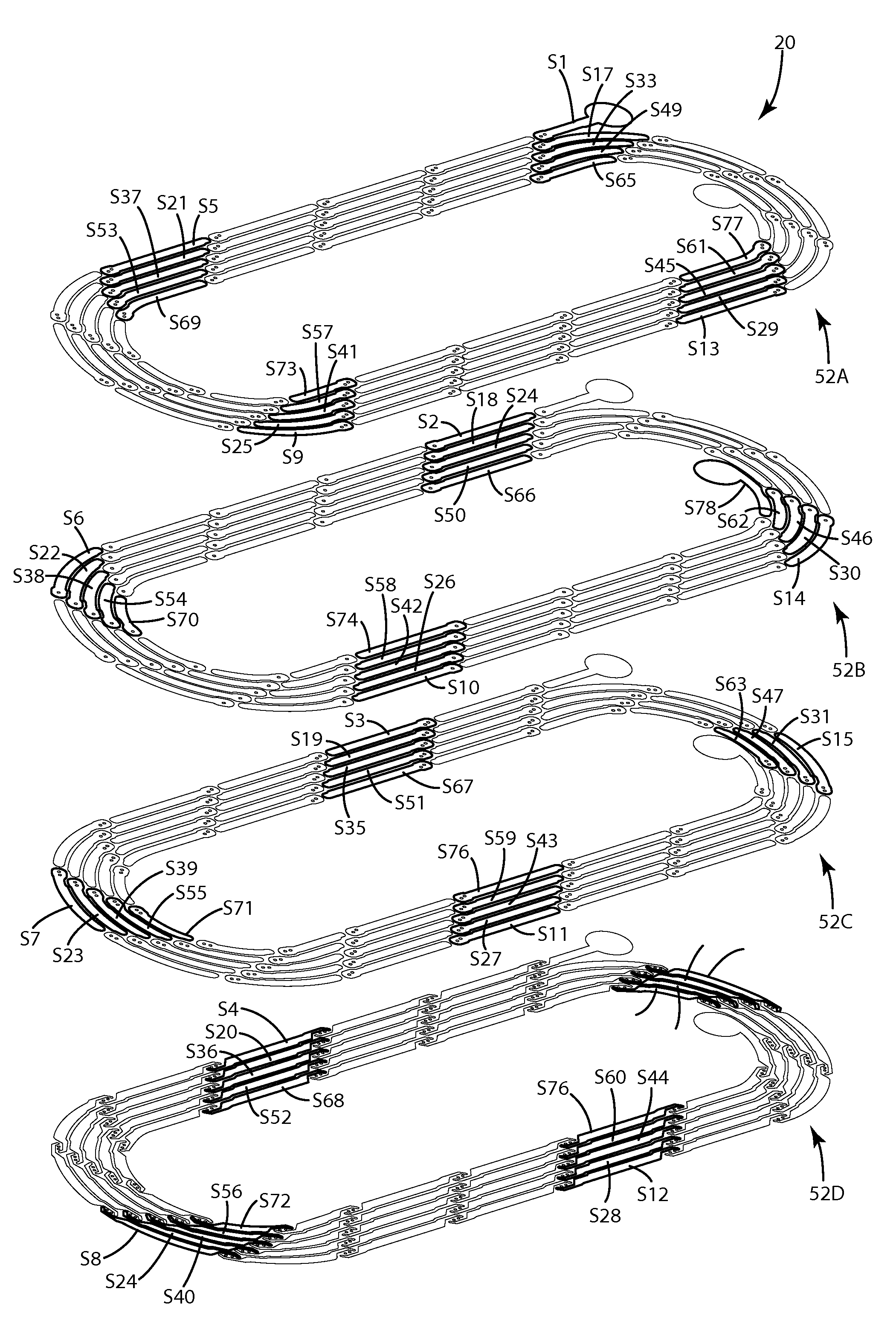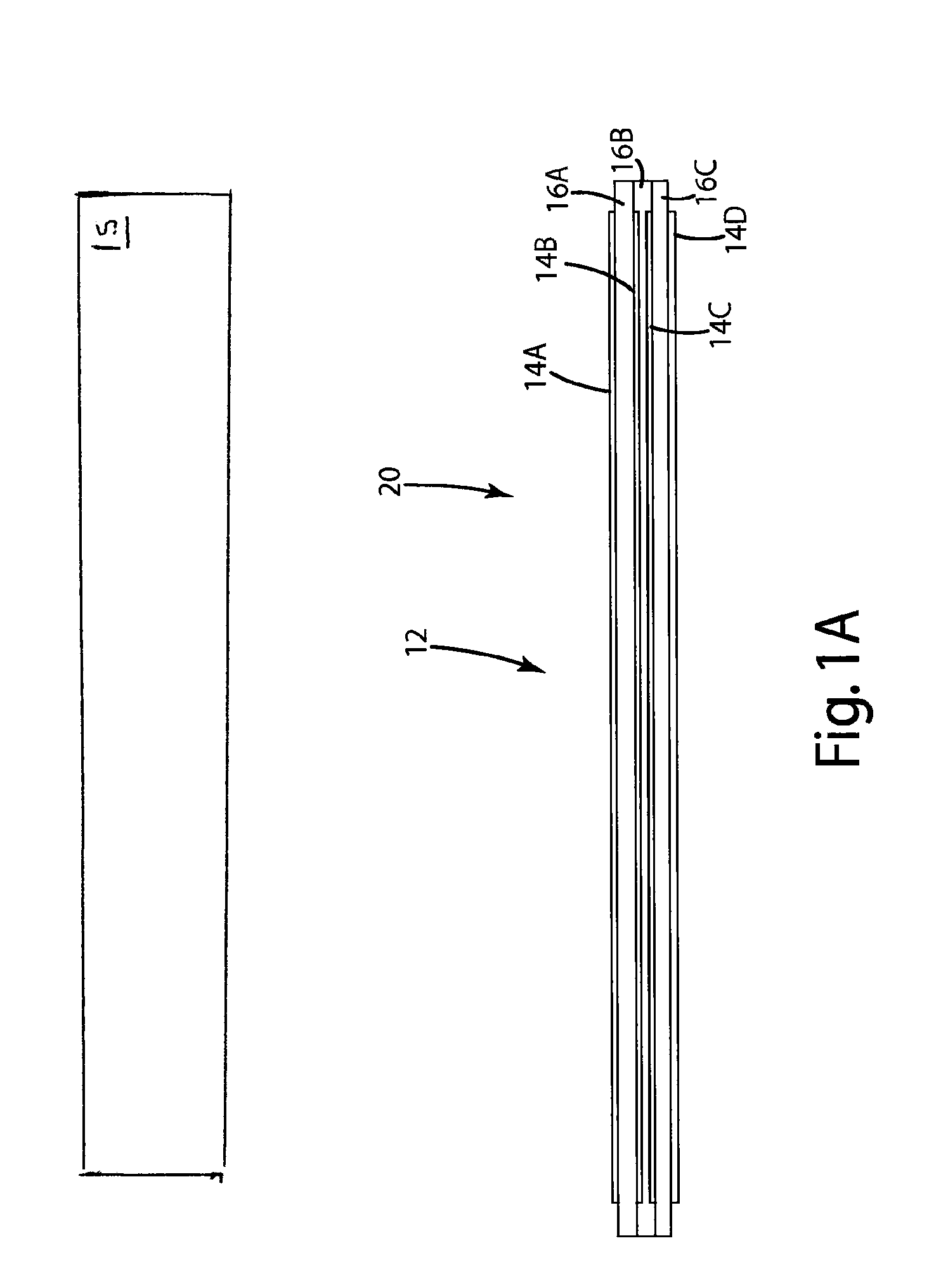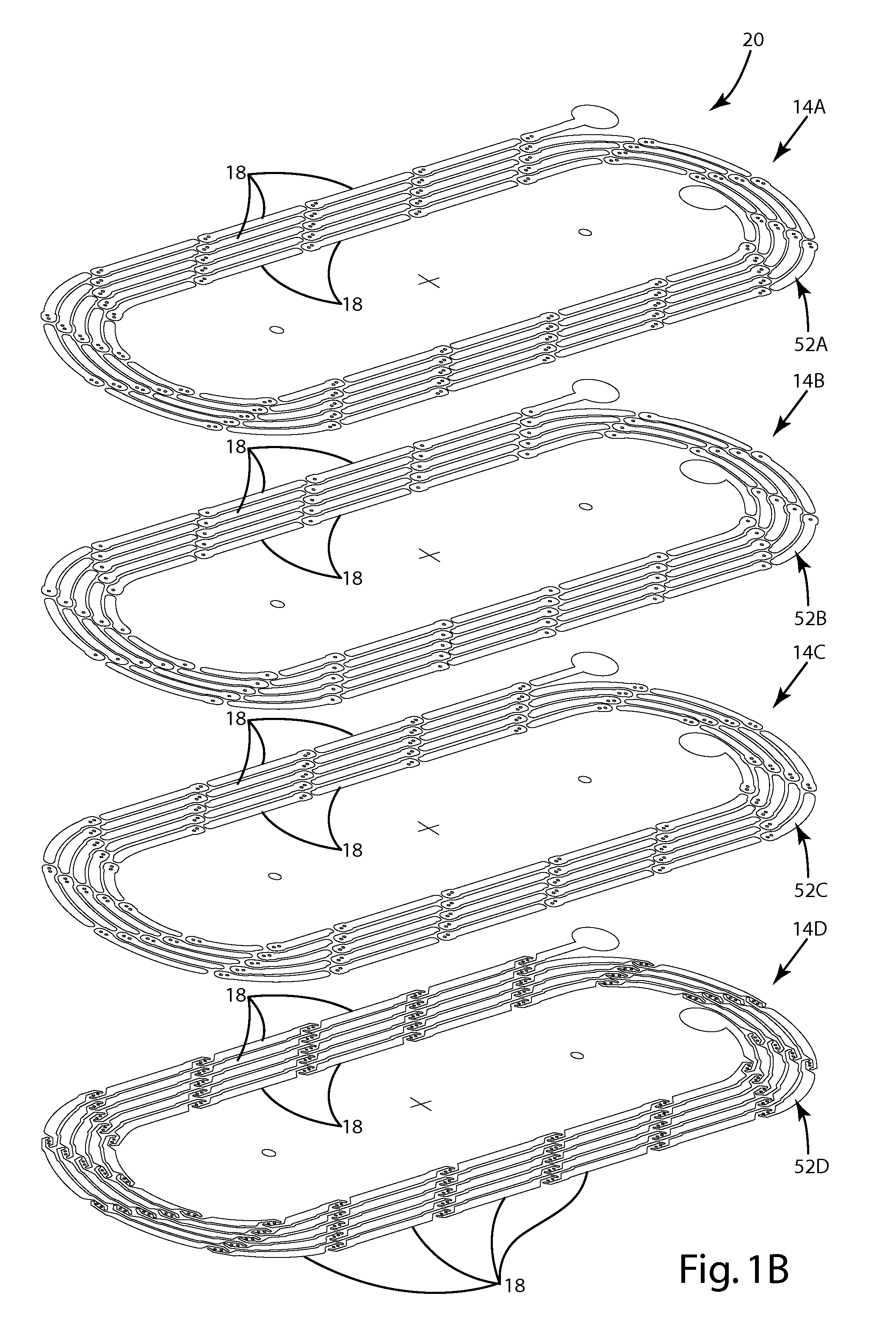Printed circuit board coil
a printed circuit board and coil technology, applied in the field of electromagnetic coils, can solve the problems of increasing the overall cost of sheaths, affecting the effect of reducing skin effect, and relatively delicate structure, and achieves the effect of reducing loss, simple and effective, and reducing skin
- Summary
- Abstract
- Description
- Claims
- Application Information
AI Technical Summary
Benefits of technology
Problems solved by technology
Method used
Image
Examples
Embodiment Construction
[0040]A printed circuit board (“PCB”) coil 20 in accordance with an embodiment of the present invention is shown in FIGS. 1A, 1B and 1C. The PCB coil 20 generally includes a plurality of alternating conductor layers 14a-d and insulator layers 16a-c that cooperatively form a multilayer coil (See FIG. 1A). Each conductor layer 14a-d includes a trace 52a-d defined by a plurality of discrete segments 18 (See FIG. 1B). The segments 18 of different traces 52a-d in different conductor layers 14a-d are interconnected by connectors 40 to define “filaments”54a-d (discrete current flow paths) that undulate through the layers in a predetermined pattern (See FIGS. 1C, 6 and 7). The predetermined pattern is designed so that there will be a substantially even distribution of power induced among the filaments 54a-d when the PCB coil is paired with a second inductive coil 15. In the illustrated embodiment, the PCB coil 20 simulates a litz wire coil in that the filaments 54a-d, though offset, follow ...
PUM
| Property | Measurement | Unit |
|---|---|---|
| time | aaaaa | aaaaa |
| inductance | aaaaa | aaaaa |
| magnetic flux | aaaaa | aaaaa |
Abstract
Description
Claims
Application Information
 Login to View More
Login to View More - R&D
- Intellectual Property
- Life Sciences
- Materials
- Tech Scout
- Unparalleled Data Quality
- Higher Quality Content
- 60% Fewer Hallucinations
Browse by: Latest US Patents, China's latest patents, Technical Efficacy Thesaurus, Application Domain, Technology Topic, Popular Technical Reports.
© 2025 PatSnap. All rights reserved.Legal|Privacy policy|Modern Slavery Act Transparency Statement|Sitemap|About US| Contact US: help@patsnap.com



